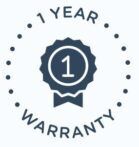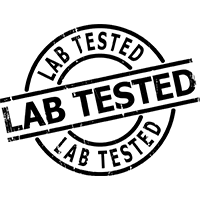

30 day money back guarantee

Lab Tested

Free shipping

Worldwide shipping
The Power Of Light In Sight
The Importance Of
Redlight Therapy
Photobiomodulation, also known as low level light therapy, is a safe and effective new option for eye health. Research has shown that red light therapy can help healing, increase blood circulation, reduce inflammation, and help protect delicate and vulnerable retinal cells from damage. With regular usage, light therapy utilising LEDs is increasingly accepted as a comfortable non-invasive treatment option for restoring and preserving healthy eyesight.
Tech Specs
Ophthalmologists and Photobiomodulation Experts.
and optimized wavelength (670nm)
with a lifespan of thousands of uses
placed to gently treat the eyes and surrounding skin
in just 3 minutes every other day
The Power of Minds In Sight
At Arunalight, we have a team of experts who are dedicated to advancing the field of red light therapy for the eyes. Our advisory board is made up of experienced ophthalmologists, optometrists, and red light therapy experts who share our vision of promoting ocular health and enhancing vision through the use of Arunalight. Our advisory board members provide invaluable insights and guidance based on their vast knowledge and expertise, ensuring that our initiatives are grounded in the latest scientific research and clinical practices.
Dr. Netan Choudhry, MD, FRCSC
Founder & Medical Director, Vitreous Retina Macula Specialists of Toronto; Faculty Member, University of Toronto and Harvard Medical School; Director, OCTane Imaging Lab (OIL) & Fellowship in Retinal Imaging & AI
Radiant Harmony: Arunalight’s Goldilocks principle for the perfect red light levels
The Goldilocks principle, also known as the ‘just right or sweet spot’ principle, is a concept derived from the story of Goldilocks and the Three Bears, which suggests that there is an optimal level of a given factor that produces the most favorable outcome. This principle can be applied to the biphasic dose response of red light exposure, where too little or too much can have opposite effects. In the biphasic dose response, there are typically three zones: a low-dose zone where there is no effect, a high-dose zone where there can be a potentially harmful effect, and a zone where tissue and cellular response are optimized, or the ‘sweet spot’.
In summary, the Goldilocks principle suggests that there is an optimal dose of red light exposure (taking into account the wavelength of light used, distance from the light source to the eyes, the intensity of light, duration of each treatment, and frequency of treatment) that produces the most favorable biologic outcome.
Our very specific knowledge of eyes and eye research has been instrumental in the development of the Arunalight. Our team of scientists, eye doctors, and photobiomodulation experts has spent over 15 years determining all of the ‘sweet spot’ parameters to optimize ocular wellness and be at the top of the biphasic curve.
About Arunalight
In Hindu mythology, Aruna is the charioteer of the sun god Surya. In other cultures, it refers to bright, shining and the color of the rising sun. Like sunlight, redlight therapy delivers wavelengths of light to the skin and eyes that can have various beneficial effects such as triggering vitamin D synthesis, stimulating cellular energy production, repair, regeneration and inflammation. Unlike sunlight, redlight therapy is safe and does not contain harmful UV radiation that can cause skin aging, sunburn and even cancer. Arunalight delivers redlight to the eyes and surrounding skin in a targeted and controlled manner which gives you the peace of mind of convenience and safety. Our primary goal is to provide a safe, home-use device that utilizes Red Light at 670 nm. This wavelength has been chosen based on available evidence, and is intended to provide an optimal response without introducing concerns related to NIR exposure. We strive to offer a device that supports the well-being of our customers. However, it is important to note that our device is not intended to diagnose, treat, cure or prevent any disease or medical condition. It is always recommended to consult with a healthcare professional before using any new health care device.
